7 Key Frameworks to Improve Your Security Team’s Integrated Threat Management
Quick Links
In today’s fast-moving threat landscape, venue and event security teams need more than just good instincts, they need proven, repeatable frameworks that work under pressure. That’s why we created the Integrated Threat Management Aide Memoire: A quick-reference tool for security professionals, designed to help you and your team make fast, informed decisions in critical situations.
Whether you print it, keep it on your device, or integrate it into your team briefings, this tool can help you respond smarter, act faster, and safeguard more effectively.
In this article, we’ll break down the 7 core frameworks in the Aide Memoire and show how they can strengthen your integrated threat management approach.
Download your free copy of the Aide Memoire, with these frameworks and more, here.
Joint Decision Model
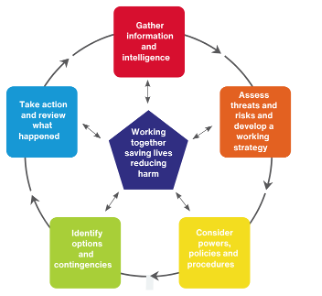
When time is critical, clarity is everything. The Joint Decision Model helps you coordinate effectively with partner agencies, assess risks, and decide on the most appropriate action.
It focuses on:
- Gathering information and intelligence
- Assessing threats and risks
- Considering powers, policies, and procedures
- Identifying options and contingencies
- Taking action and reviewing the outcome
Used correctly, the JDM ensures that everyone in the chain of command is aligned and informed.
HOT Protocol – Unattended item assessment
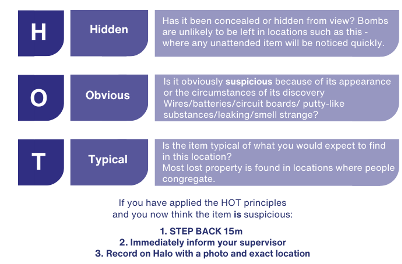
When you find an unattended item, your ability to quickly determine if it’s lost property or a suspicious device can save lives.
HOT stands for:
- Hidden – Has it been concealed or hidden from view?
- Obviously Suspicious – Wires, batteries, substances, unusual smells?
- Typical – Is it what you’d expect to find in that location?
If the item fails the HOT test, you step back, inform, and record — following your cordon and communication procedures.
Four Cs & 5 Ws – Information to prepare for Police
This dual framework ensures you control the scene and communicate the right details to police and emergency responders.
The Four Cs: Clear, Control, Confirm, Communicate.
The Five Ws: What, Who, Why, When, Where.
The result? A scene that’s secure, documented, and ready for professional assessment.
METHANE – Shared situational awareness
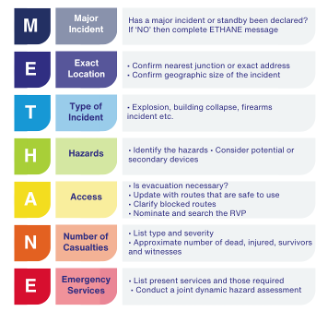
Used widely across UK emergency services, METHANE ensures everyone has a consistent operational picture. It’s an interoperability essential that reduces confusion in multi-agency incidents.
Crowd Tension Indicator
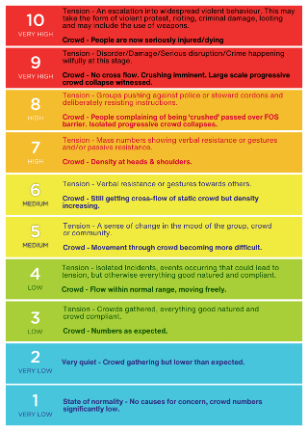
Crowds can shift from compliant to hostile in moments. By tracking indicators like crowd density, mood changes, and signs of agitation, you can spot early warning signs before escalation.
These cues help you adapt stewarding, adjust communications, and, if necessary, coordinate rapid intervention.
Threat Assessment – Identify, Intent, Capability, Immediacy
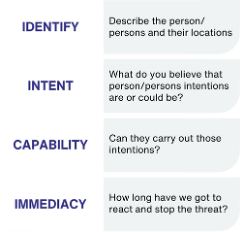
A simple but powerful threat model, this method keeps your threat analysis fast, structured, and actionable.
CBRN Approach – Casualty hazard awareness

Chemical, Biological, Radiological, and Nuclear threats require special caution. This step-based approach helps you decide how close you can get to casualties safely.
Why These Frameworks Matter
Integrated threat management is about reducing decision fatigue under stress. With a shared set of tools and language, your team can:
- React faster
- Avoid mistakes
- Improve coordination
- Save lives
The Aide Memoire brings all these frameworks into one portable reference, so you’re never more than a glance away from critical guidance.
Download Our Free Aide Memoire
Get all of these frameworks and more in a handy pocket size booklet you can print out or download onto your device.
